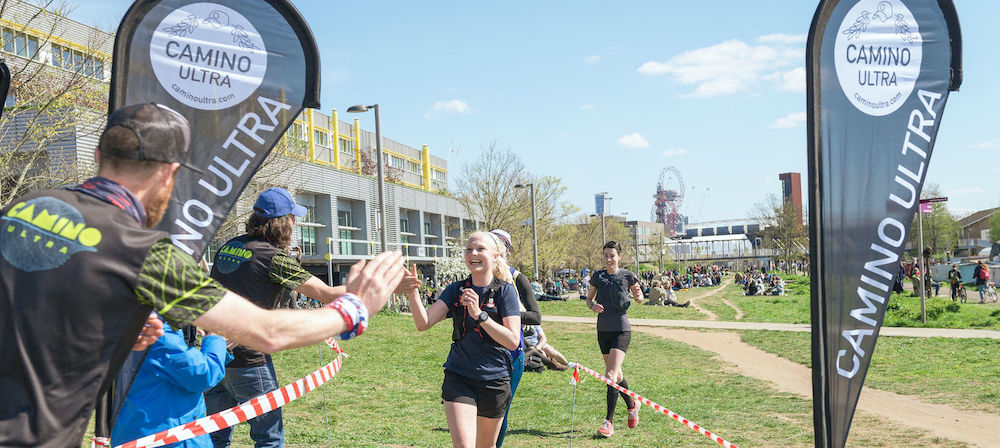Last updated: 14-Mar-19
By Luke Jarmey
At RunUltra we have very strong links with Nepal and we wanted to hear from someone on the ground what is going on post-earthquakes and how the running community can help. Thanks to Richard P. Bull, who is a long-term resident in Kathmandu and an ultra race organiser for this.
Q. Please tell us a little bit about yourself: Your name, where you are from, what job you do, if you are a runner, and your link to Nepal.
A. I am Richard Bull, from the UK but living in Nepal for some six years now. I am a lazy runner and a race director for several single day and stage races in Nepal. I run a small web outsourcing company in Kathmandu.
Q. From your sources on the ground what have you heard about what happened when the earthquakes struck.
A. I was on the ground but to the west of the affected area, in Mustang on the Mustang Trail Race. The ground shook a little, some dry stone walls fell, and some older houses were damaged, but the effect there was very limited. Friends in Kathmandu and nearby recount a different story. Some were in a forest, and the trees we shaking like crazy, others were on a hill above the city where they could see dust from individual houses collapsing, and some were in the city itself and endured a minute of terror.
Q. How were your friends/colleagues affected? How was their community affected?
A. Very different for different people. I am lucky that no friends were injured. But it ranges from people in strongly made houses in less affected areas, to villages with traditionally built houses that pretty much were all damaged or collapsed. Try to imagine what it is like, when everyone in your street and the streets around has no house any more and all your possessions are under the rubble. Then it rains. It’s desperate.
Q. Did they get much outside help or aid or did they have to do everything for themselves?
A. It was mixed. Nepal is hilly as hell of course and the effect of the landscape on transport and access to places is huge. Those places close to major roads received some help quickly, and those some days’ walk from the road received help much, much later, if at all. Those communities tend to be poorer and already disadvantaged, so it is all the more tragic. Relief help, because villages are so spread out, and because the area affected is so big, has been limited and difficult to get to the people who need it the most. The priorities were tarpaulins for shelters, food and medical supplies.
Q. What is the situation now a few weeks after the earthquake?
A. Better, but still pretty dire. It seems most people have organised shelter from the rain at least. Now comes the monsoon. Some 1.2m of rain will fall over the next four months. People are mainly farmers and are planting rice now, those who have managed to keep seed stocks at least. Numerous landslides are expected during the monsoon, which can block roads and trails, and many more than usual are expected after the earth was shaken. People will start to rebuild houses after the rains stop, but rebuilding is expensive, so it is going to take a long time.
Q. What needs to happen now?
A. It is very complicated of course. There’s a long sustained effort needed to ensure communities’ safety, food security, and to restart usual services like education, health and local government. Apparently 32,145 classrooms need to be rebuilt after the earthquake. The effort needs to be kept up, otherwise it will like the situation after other earthquakes where 5 or 7 years on people are still living in their temporary shelter.
Q. How have the trails and routes that runners and hikers use been affected?
A. Some of the routes have been affected but fortunately many others have not.
Q. How important is this kind of tourism? In terms of work and the economy?
A. I’ve heard various figures that state it contributes up to 10% of GDP, and is a big foreign currency earner. Shortly after the earthquake Kathmandu’s tourist area was almost deserted as all the staff had returned home to their villages in the surrounding districts which showed just how many of the affected rely on tourism work.
Q. Do you feel that Nepal was and is being supported by the rest of the world?
A. Yes, very much so, by governments as well as a staggering amount of individual initiatives which has been amazing. But it is the nature of these natural disasters that they take a long time to recover from and attention wanes over a matter of months. But Nepal’s magic has affected many people who have very strong bonds with the country and I am sure people will go on helping in the future.
Q. Do you think it is now safe?
A. In most places, yes. I’ve just returned from a trip to Dhorpatan, a beautiful place to the west of the country. It was completely unaffected by the earthquake, and would make an awesome fastpacking trip destination. It is as safe as it was before 25th April.
Other places do have an increased risk of landslide at the moment and until the end of the monsoon after which it dries up.
It’s getting pretty clear where the higher risk areas are and where not and technical surveys are ongoing at the moment. If someone wants to visit Nepal this coming season, I’d say go for it, just pick the right place.
Q. Do you want the races in Nepal to go ahead this year? Why? Why not?
A. Yes. Safety always comes first, and like races anywhere it is important to do an accurate risk assessment beforehand and make plans accordingly. My next event is the Annapurna 100 closely followed by the Mustang Trail Race Badwater Special and both are as safe as before the earthquake.
I’ve been trying to support elite runners in Nepal for some time now, and it is also very important to keep putting on races for elites to train for and hone their skills for international races.
After all the terrible imagery on the TV, I think it is very important to keep these events going and create positive news from Nepal. There is a difficult balance between showing the continuing need for relief help and trying to encourage tourists to still come and visit the unaffected areas, on which so many livelihoods depend.
Q. How can runners from abroad help Nepal to rebuild?
A. There are two or three ways I guess. As alway in situations like this, money is the easiest way to help. It is the thing that buys the materials to rebuild. Giving to a reputable organisation is a great way to help.
Running specific, we’re having a moral-boosting, fundraising for education race on 27th June. People are welcome to sponsor a young runner – they’ll get a certificate which shows what they have done for their community.
For moral support, you can also follow Mira Rai. She is a young Nepali woman with an incredible story. Maybe this will help people to keep Nepal in their mind, and again in a positive way.
I know some people will come here to volunteer and lend a hand with the labour that has to be done, which if they have some skills and time is great.
Q. What message would you like to give us about how to help now and for the future?
A. Keep visiting Nepal. Really, tourism has done so much for this country, parts of it at least. It gives tens of thousands of people meaningful employment.
Q. Should people visit Nepal or should they not because it is heartless to be enjoying themselves when the people have been so devastated?
A. A very good question. It might seem like that at first glance. I think many people come to Nepal enjoy themselves, but also to be challenged, to learn, to interact and even to be changed. It is very different to a holiday in Spain.
Tourism is a big part of the economy and thus a big part of helping people get back on their feet. A surprising percentage of money earned by guides, porters, tea-house owners etc. goes into educating their children for instance.
If you travel to Pokhara or Annapurna you will not be confronted with devastation. And, if you travel to affected areas, you also find the famous Nepali resilience in action: rolling up their sleeves and getting the hard work done, and finding humour and laughter whenever possible.






